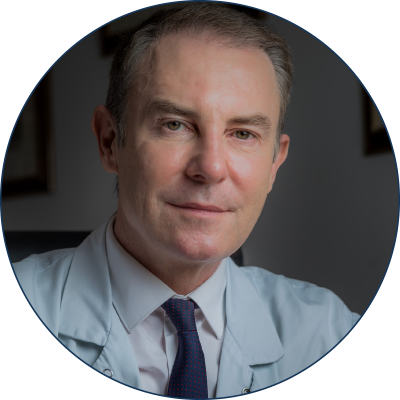
THE RISE OF PLATELET-RICH PLASMA (PRP) IN REGENERATIVE MEDICINE: A PROMISING HORIZON
Prof. Jean-Paul Meningaud | Chef du service de chirurgie plastique et maxillo-faciale CHU Henri Mondor de Créteil Article in FrenchProf. Meningaud’s professional activities focus on General Plastic Surgery, Maxillofacial and Facial Plastic Surgery, Aesthetic Medicine and Aesthetic Surgery.
Prof. Jean-Paul Meningaud has been a Professor at the University of Paris 12 since 2009, and Head of the Plastic, Reconstructive, Aesthetic and Maxillofacial Surgery Department at the Henri Mondor University Hospital since 2012. He is a former intern at the Paris Hospitals and former Senior Registrar at the Salpêtrière Hospital.
He has been a legal expert at the Paris Court of Appeal since 2006 and has been approved by the Court of Cassation since 2012. A face specialist, I have been involved in 7 face transplants since 2007. I was honoured to be admitted to the Académie Nationale de Chirurgie in 2018 and to become a full member.

Regenerative medicine, in perpetual search for progress and innovation, has recently been enriched by a promising approach: the use of Platelet-Rich Plasma (PRP).
This technique, which consists of injecting a platelet concentrate taken from the patient’s own blood, opens up exciting prospects for the repair of damaged tissue, particularly the skin sequelae of accidents or various pathologies.
The intrinsic properties of PRP, in particular its richness in growth factors, make it a potentially revolutionary tool for accelerating wound healing and promoting tissue regeneration. The application cases are numerous, ranging from accelerated healing of sports injuries to repair of skin damage resulting from burns, surgical procedures or even chronic dermatological conditions.
• In the area of skin sequelae, the results obtained so far are encouraging.
– PRP has been shown to improve the elasticity and aesthetic appearance of the skin, contributing to a better quality of life for affected patients.
– However, studies are still needed to establish standardized protocols, optimize platelet concentrations, and determine the most effective application frequencies.
• Beyond the clinical applications already identified, the field of possibilities also extends to fields bordering on aesthetics.
– For example, the treatment of alopecia, early dermatoporosis, or the aesthetic sequelae of certain pathologies are promising areas for PRP.
– However, these applications raise ethical and regulatory questions, including the distinction between necessary medical procedures and desired cosmetic procedures.
It is therefore imperative that health authorities, researchers and practitioners work closely together to clarify the rules for the use of PRP.
Clear regulations based on solid scientific evidence would guarantee the effectiveness and safety of treatments, while providing a framework for practices to avoid commercial abuses. Interest in PRP in regenerative medicine continues to grow, demonstrating its potential to transform patient care.
Continuing research in this area is not only an investment in medical technology, but also a commitment to more personalized and restorative medicine.
The future of regenerative medicine looks rich, with PRP as one of its key players, promising significant advances in healing and restoring bodily functions and aesthetics.
REFERENCES
1. Anitua E., Sánchez M., Nurden A. T., Nurden P., Orive G., Andia I. New insights into and novel applications for platelet-rich fibrin therapies. Trends in Biotechnology 2007 ; 24(5) : 227-34. https://pubmed.ncbi.nlm.nih.gov/16540193/ This publication explores the novel applications of platelet-rich fibrinogen, a variant of PRP, highlighting its potential for tissue regeneration.
2. Dhurat R., Sukesh M. Principles and Methods of Preparation of Platelet-Rich Plasma: A Review and Author’s Perspective. Journal of Cutaneous and Aesthetic Surgery 2014 ; 7(4) : 189-97. https://pubmed.ncbi.nlm.nih.gov/25722595/ This article provides an overview of PRP preparation methods and discusses its effectiveness in various dermatological treatments, including alopecia.
3. Gentile P., Garcovich S. Advances in Regenerative Stem Cell Therapy in Androgenic Alopecia and Hair Loss: WNT Pathway, Growth-Factor, and Mesenchymal Stem Cell. Biomedicines 2020 ; 8(5) : 117. https://pubmed.ncbi.nlm.nih.gov/31100937/ This study focuses on regenerative therapies for the treatment of alopecia, including PRP, and highlights the importance of growth factors and mesenchymal stem cells.
4. Conde Montero E., Fernández Santos M. E., Suárez Fernández R. Platelet-rich plasma: applications in dermatology. Actas Dermo-Sifiliográficas 2015 ; 106(2) : 104-11. https://pubmed.ncbi.nlm.nih.gov/24795093/ This article reviews the applications of PRP in dermatology, including its role in improving the aesthetic sequelae of skin pathologies.
5. Mazzocca A. D., McCarthy M. B., Chowaniec D. M., Cote M. P., Romeo A. A., Bradley J. P., Arciero R. A., Beitzel, K. Platelet-Rich Plasma Differs According to Preparation Method and Human Variability. The Journal of Bone and Joint Surgery 2012 ; 94(4) : 308-16. https://pubmed.ncbi.nlm.nih.gov/22336969/ This research compares different methods of PRP preparation and examines inter-individual variations, which are essential for standardizing treatments.
